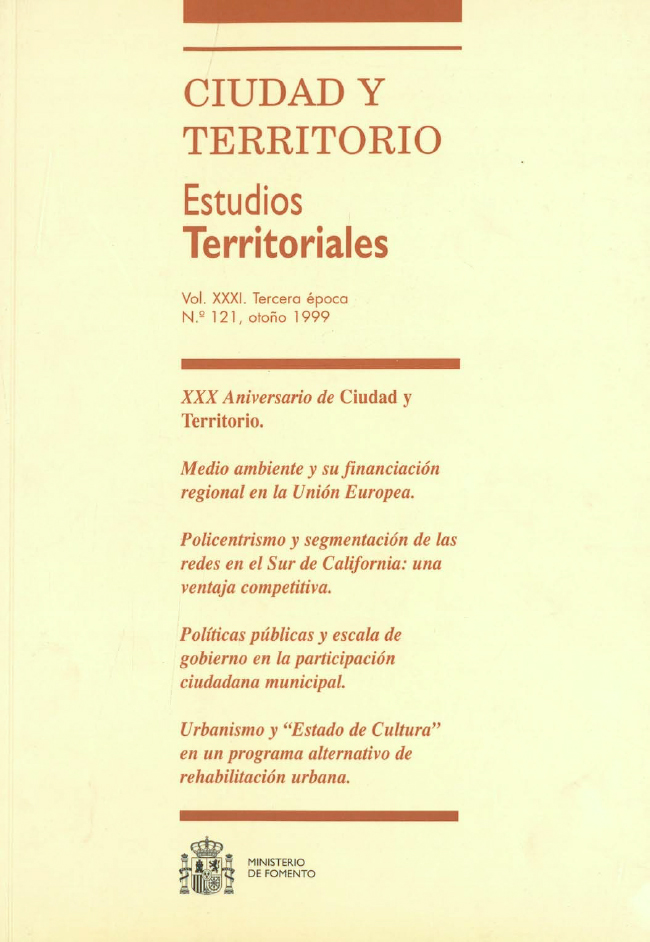Southern California as a Global Gateway Region: Polycentricity and Network Segmentation as Competitive Advantages
Keywords:
Competitividad, Globalización, California, Redes, Áreas metropolitanasAbstract
This contribution will provide an overview of the most significant internal aspects that have promoted Southern California 's rise as a global metropolis. A central argument of this paper is that Southern California's rising importance has been largely supported by its polycentric metropolitan structure, and by the multifaceted segmentation and flexibility that it has fostered in most every aspect of its economic and social life. Although the perspective of this contribution will be general in scope, much of the discussion will be concerned with labor and employment. The following will provide a brief overview of Southern California' s history, its rapid urban growth, and its polycentric character. That will be followed up by a brief discussion of its global relevance and the two main characteristics, segmentation and flexibility, which have helped it become a world-class metropolis. A final section will then consider the segmentation of networks, with particular attention being given to the proliferation of barrier network structures within the region, and their impact on labor flows and employment. In general, the approach taken by this contribution will be macro-level, providing broad overviews rather than focusing on microanalytic details.
Downloads
Downloads
Published
How to Cite
Issue
Section
License
Copyright (c) 1999 Luis Suárez-Villa

This work is licensed under a Creative Commons Attribution-NonCommercial-NoDerivatives 4.0 International License.
Considering the provisions of the current legislation on Intellectual Property, and in accordance with them, all authors publishing in CyTET give -in a non-exclusive way and without time limit- to the Ministry of Transport, Mobility and Urban Agenda the rights to disseminate, reproduce, communicate and distribute in any current or future format, on paper or electronic, the original or derived version of their work under a Creative Commons Attribution-NonCommercial-NoDerivative 4.0 license International (CC BY-NC-ND 4.0), as well as to include or assign to third parties the inclusion of its content in national and international indexes, repositories and databases, with reference and recognition in any case of its authorship.
In addition, when sending the work, the author(s) declares that it is an original work in which the sources that have been used are recognized, committing to respect the scientific evidence, to no longer modify the original data and to verify or refute its hypothesis. Author(s) also declare that the essential content of the work has not been previously published nor will it be published in any other publication while it is under evaluation by CyTET; and that it has not been simultaneously sent to another journal.
Authors must sign a Transfer of Rights Form, which will be sent to them from the CyTET Secretariat once the article is accepted for publication.
With the aim of promoting the dissemination of knowledge, CyTET joins the Open Journal Access (OA) movement and delivers all of its content to various national and international indexes, repositories and databases under this protocol; therefore, the submission of a work to be published in the journal presupposes the explicit acceptance by the author of this distribution method.
Authors are encouraged to reproduce and host their work published in CyTET in institutional repositories, web pages, etc. with the intention of contributing to the improvement of the transfer of knowledge and the citation of said works.







